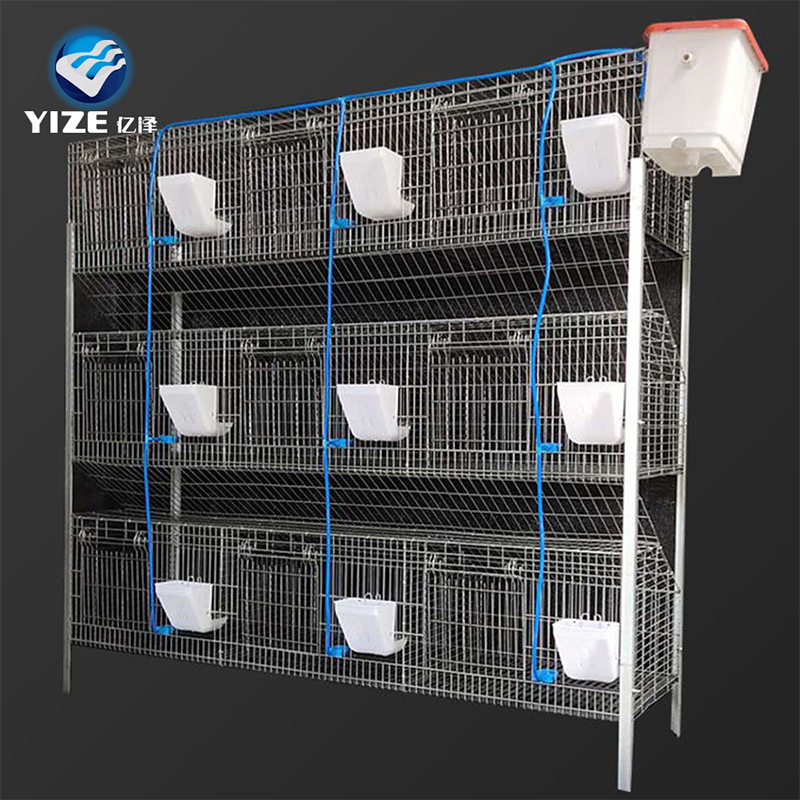Exploring the Benefits and Challenges of Cage-Based Poultry Farming for Sustainable Livestock Production
Jul . 28, 2024 19:23 Back to list
Exploring the Benefits and Challenges of Cage-Based Poultry Farming for Sustainable Livestock Production
Cage Poultry Farming Understanding Its Role and Impact
Cage poultry farming, a method that has sparked considerable debate among animal welfare advocates, consumers, and producers, plays a significant role in the poultry industry worldwide. This system primarily involves housing hens in confined spaces, often in battery cages, allowing for mass production of eggs at lower costs. While cage systems offer numerous advantages for the producers in terms of efficiency and management, they also raise substantial concerns regarding animal welfare, environmental impact, and food safety.
One of the main benefits of cage poultry farming is its efficiency. The density of birds in cages allows farmers to maximize productivity while minimizing space requirements. This is particularly important in a world with increasing demands for poultry products. With battery cages, farmers can monitor and control the health, feeding, and reproduction of a large number of birds with relative ease. This system tends to yield higher egg production rates, making it economically viable for large-scale operations.
However, the advantages of cage poultry farming come at a significant cost to animal welfare. These systems often restrict the natural behaviors of hens, such as perching, nesting, and foraging. Critics argue that housing birds in small cages leads to physical and psychological stress. Research has shown that hens in such environments may exhibit signs of distress, including feather pecking and aggression, which can lead to higher mortality rates. In response to mounting pressure from consumers and animal rights organizations, many countries are beginning to phase out or regulate the use of battery cages, promoting alternative housing systems such as free-range or enriched cages.
cage poultry farming

Environmental concerns are also associated with cage poultry farming. The concentration of large numbers of animals in confined spaces can lead to significant waste management issues. Manure accumulation can result in pollution of local waterways if not handled properly, contributing to eutrophication and harming aquatic life. In addition, the greenhouse gas emissions from poultry farming are a growing concern in the context of global climate change. As the demand for poultry products rises, the industry must seek sustainable practices that minimize environmental impact.
Food safety is another critical aspect of cage poultry farming. Intensive farming practices can lead to increased risks of disease transmission, both among animals and to humans. The close confinement of birds can facilitate the spread of pathogens, such as Salmonella and Campylobacter, which pose health risks to consumers. Implementing stringent biosecurity measures is essential for mitigating these risks. Additionally, with the rise of antibiotic resistance, ensuring that poultry operations are managed responsibly is vital to safeguarding public health.
In conclusion, cage poultry farming is a complex issue that encompasses economic efficiency, animal welfare, environmental sustainability, and food safety. While it has provided a means to meet the global demand for poultry products, the associated ethical and environmental concerns cannot be overlooked. As consumer preferences shift towards more humane and sustainable options, the poultry industry faces the challenge of evolving its practices. Embracing alternative farming methods that prioritize both animal welfare and environmental stewardship will be crucial in shaping the future of poultry production. By addressing these issues thoughtfully, stakeholders can work towards a more balanced approach that meets the needs of consumers and animals alike.
-
Hot Sale 24 & 18 Door Rabbit Cages - Premium Breeding Solutions
NewsJul.25,2025
-
Automatic Feeding Line System Pan Feeder Nipple Drinker - Anping County Yize Metal Products Co., Ltd.
NewsJul.21,2025
-
Automatic Feeding Line System Pan Feeder Nipple Drinker - Anping County Yize Metal Products Co., Ltd.
NewsJul.21,2025
-
Automatic Feeding Line System - Anping Yize | Precision & Nipple
NewsJul.21,2025
-
Automatic Feeding Line System - Anping Yize | Precision & Nipple
NewsJul.21,2025
-
Automatic Feeding Line System-Anping County Yize Metal Products Co., Ltd.|Efficient Feed Distribution&Customized Animal Farming Solutions
NewsJul.21,2025






